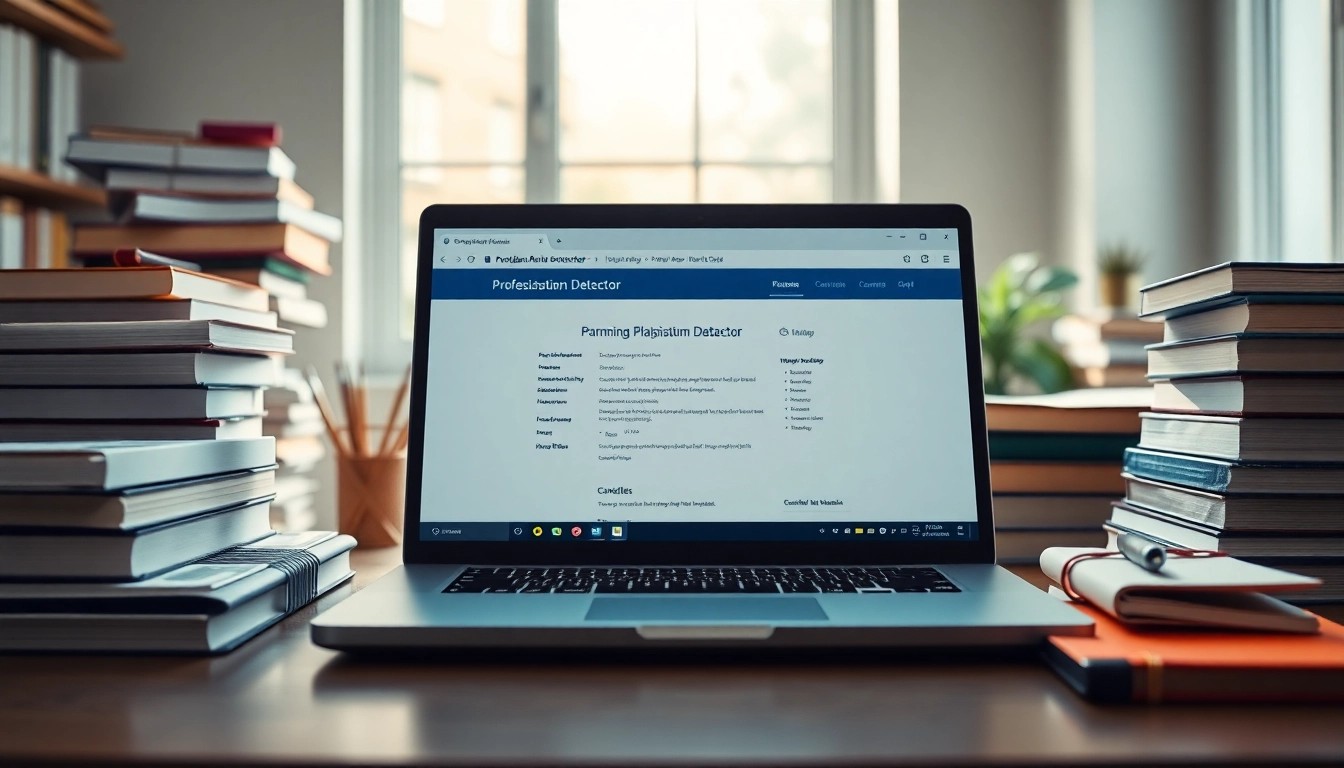Understanding the Importance of a Plagiarism Detector
In today’s digital age, the integrity of written content has become paramount. Whether in academic settings, professional writing, or content creation, the uniqueness of one’s work is not just expected but required. This has resulted in an increasing reliance on tools designed to ensure originality, among which the plagiarism detector plays a pivotal role. These tools not only help in identifying copied content but also in enhancing the quality of writing by providing feedback and suggestions.
What is a Plagiarism Detector?
A plagiarism detector is a software tool designed to scan and analyze text to find instances of copied or closely paraphrased content. Essentially, it compares a submitted document against a vast database of existing written work, including online articles, academic papers, and other content. When the tool detects similarities, it marks these sections, allowing the user to address potential issues of plagiarism before publication.
How Plagiarism Detectors Work
The functionality of plagiarism detectors can be divided into several key processes:
- Text Analysis: The detector first breaks down the submitted text into smaller segments or phrases to compare them effectively against a database.
- Database Comparison: It then checks these segments against various sources, which could include academic journals, books, websites, and other documents available online.
- Matching Algorithms: Advanced algorithms are used to assess the degree of similarity between the text being analyzed and the reference material, accounting for paraphrased content as well.
- Reporting: Once the analysis is complete, the tool generates a report highlighting matched content, providing links to original sources, and indicating plagiarism risk percentages.
Why Use a Plagiarism Detector?
The use of a plagiarism detector is crucial for various reasons:
- Academic Integrity: For students and educators alike, ensuring academic integrity is fundamental. Detecting plagiarism not only prevents academic misconduct but also fosters a culture of originality.
- Professional Credibility: For writers, journalists, or any professional content creators, originality is essential for maintaining credibility and authority in their field.
- Improved Quality of Work: Plagiarism detection tools can offer insights and recommendations for rephrasing or citing sources correctly, ultimately enhancing the quality of the writing.
- Legal Protection: In the realm of intellectual property, using a plagiarism detector helps in protecting content creators from copyright infringements and legal issues.
Top Features to Look for in a Plagiarism Detector
Accuracy of Detection
One of the most critical attributes of any plagiarism detector is its accuracy. A reliable tool should effectively identify both direct plagiarism (copying text verbatim) and paraphrased content. Advanced algorithms that can recognize varied forms of text can significantly increase the tool’s effectiveness.
Ease of Use and Accessibility
User-friendly interfaces are essential in any tool, especially those used by students or busy professionals. An effective plagiarism detector should be easy to navigate, with clear instructions on how to submit documents and interpret results. Additionally, accessibility across devices and operating systems offers greater flexibility for users.
Integration with Other Tools
Seamless integration with other writing and editing tools (like word processors or content management systems) can enhance workflow efficiency. For example, a plagiarism detector that works within a word processor allows users to check documents without switching applications, saving time and effort.
Comparing Popular Plagiarism Detectors
Plagiarism Detector by Grammarly vs. Others
Grammarly’s plagiarism detector stands out in the competitive landscape due to its integration with a robust grammar and style-checking tool. It checks documents against billions of web pages and documents, providing users with detailed reports. However, alternatives like Scribbr and Duplichecker also offer powerful features, often with distinct focuses—like Scribbr’s academic emphasis or Duplichecker’s accessibility.
Free vs. Paid Plagiarism Detectors
While there are many free plagiarism checkers available, they often come with limitations, such as database size or the depth of analysis. Paid tools typically provide more comprehensive services, better accuracy, and more detailed reporting. Investing in a reputable paid detector can yield greater long-term benefits in terms of integrity and quality.
Real User Reviews and Experiences
Understanding real user experiences can offer insight into the effectiveness of various plagiarism detectors. Reviews often highlight ease of use, accuracy, and customer support. Tools like Copyleaks and Turnitin have garnered positive feedback in academic settings, owing to their rigorous checking processes and detailed reports.
Best Practices for Using a Plagiarism Detector
How to Effectively Use a Plagiarism Detector
To maximize the effectiveness of a plagiarism detector, users should follow these key practices:
- Review Submission Guidelines: Ensure that you understand the specific features and requirements of the plagiarism detector in use.
- Use Multiple Tools: For comprehensive analysis, it may be beneficial to utilize more than one plagiarism detector to capture a wider range of potential issues.
- Understand Plagiarism Types: Familiarize yourself with various forms of plagiarism—such as self-plagiarism, mosaic plagiarism, and accidental plagiarism—to better interpret results.
Understanding Plagiarism Reports
When reviewing a plagiarism report, look for the following attributes:
- Similarity Index: This percentage indicates how much of the text matches other sources, giving an overview of originality.
- Highlighted Sections: These areas indicate which parts of your work need attention, with links to original sources or examples.
- Suggested Actions: Some plagiarism detectors offer recommendations, such as paraphrasing or proper citation formats.
Improving Your Writing with Feedback
Utilizing plagiarism detection not only helps in maintaining originality but also provides constructive feedback. After receiving your report, take the time to revise your work. Focus on areas where plagiarism may have been flagged and consider how to express ideas more originally. This process not only mitigates the risk of plagiarism but also enriches your writing skills over time.
Future of Plagiarism Detection Technology
AI Innovations in Plagiarism Detection
The realm of plagiarism detection is ever-evolving, particularly with the advancements in artificial intelligence. Future detectors will likely incorporate machine learning algorithms to improve detection accuracy and efficiency. These innovations promise to not only identify copied content but also analyze writing styles, providing more tailored feedback to users.
The Role of Ethical AI in Education
As AI becomes more integrated into educational tools, ethical considerations must be addressed. Ensuring that plagiarism detectors operate transparently while respecting user privacy is paramount. Educational institutions must also consider how these tools affect student learning and integrity, aiming to promote original thought and creativity.
Preparing for Changes in Academic Integrity Standards
With the rise of content generated by AI, academic integrity standards are likely to evolve. Institutions may develop new policies regarding the use of AI in writing, necessitating the role of plagiarism detectors in distinguishing between human and machine-generated content. This adaptation will require continuous improvement in detection technology and an attuned understanding of what constitutes original work in a digital landscape.



